1926 Minerva AF Town Car
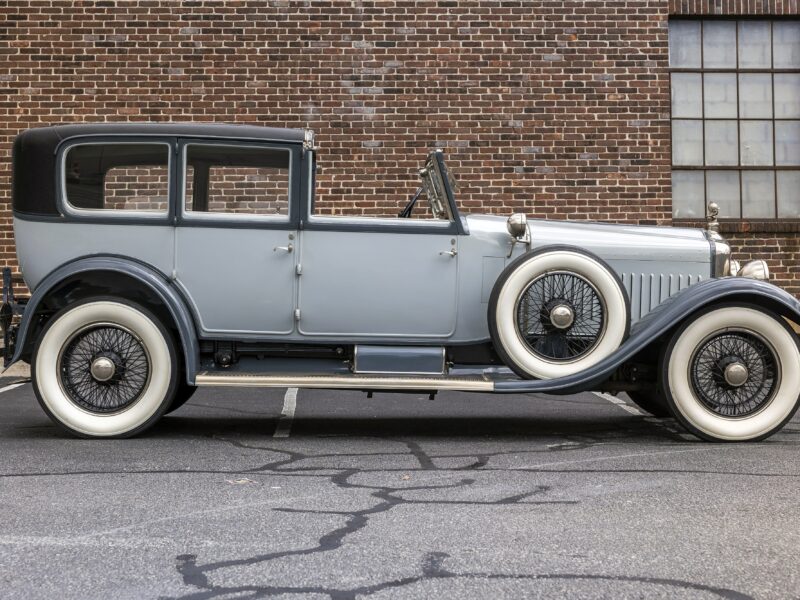
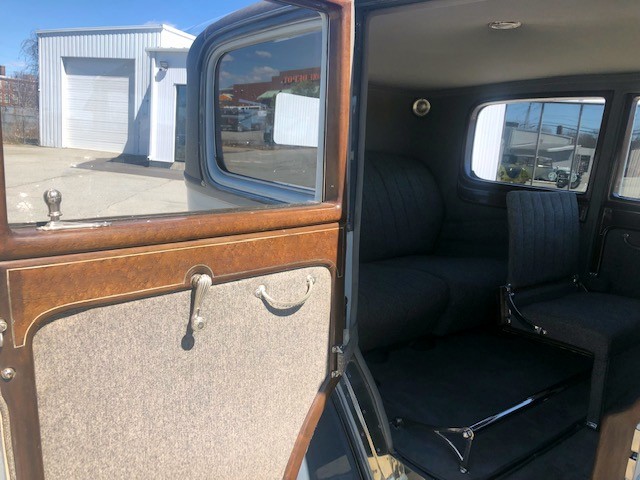
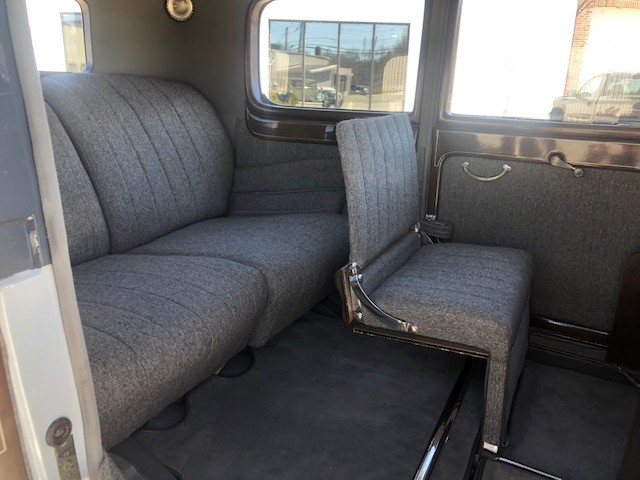
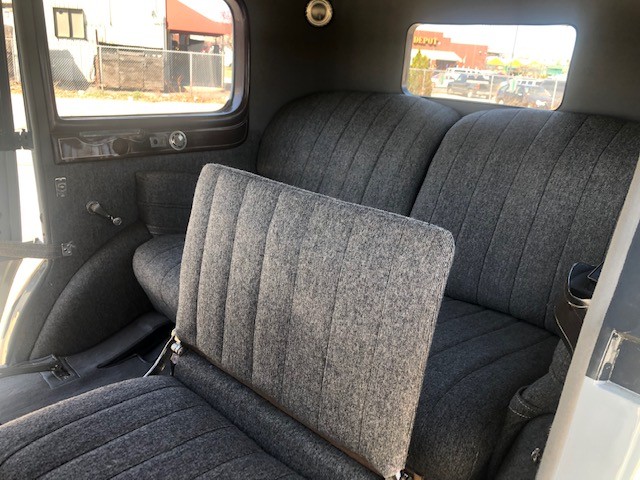
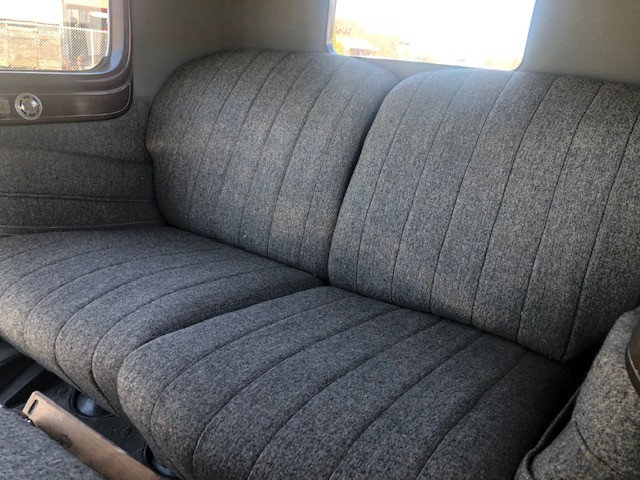
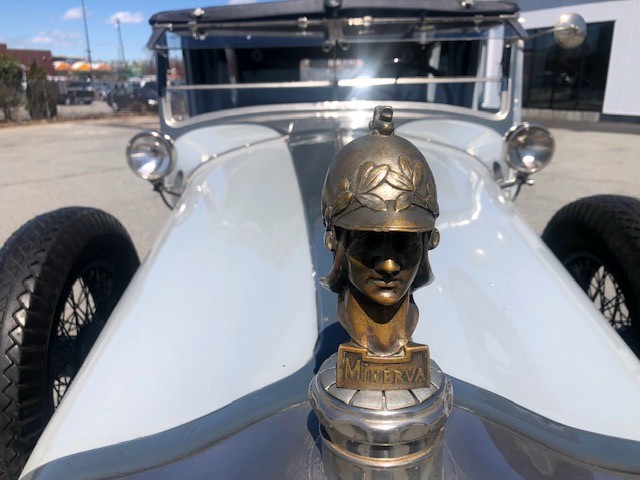
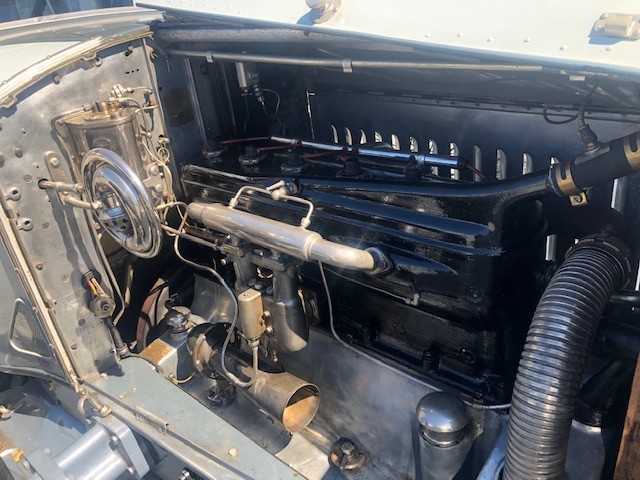
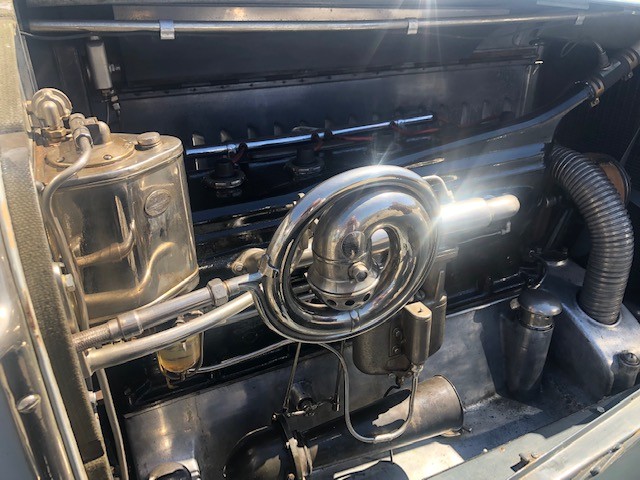
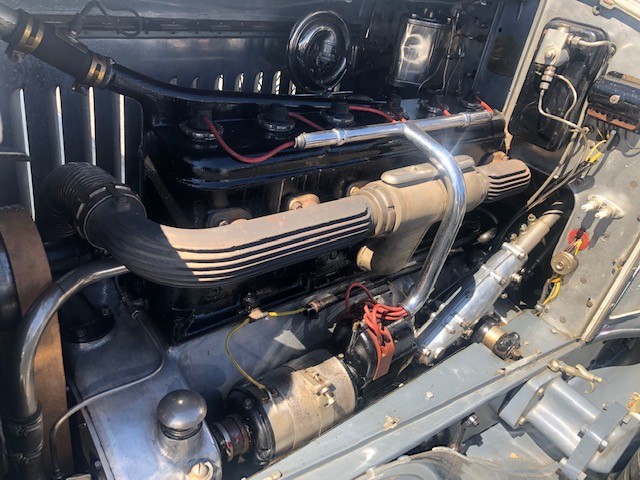
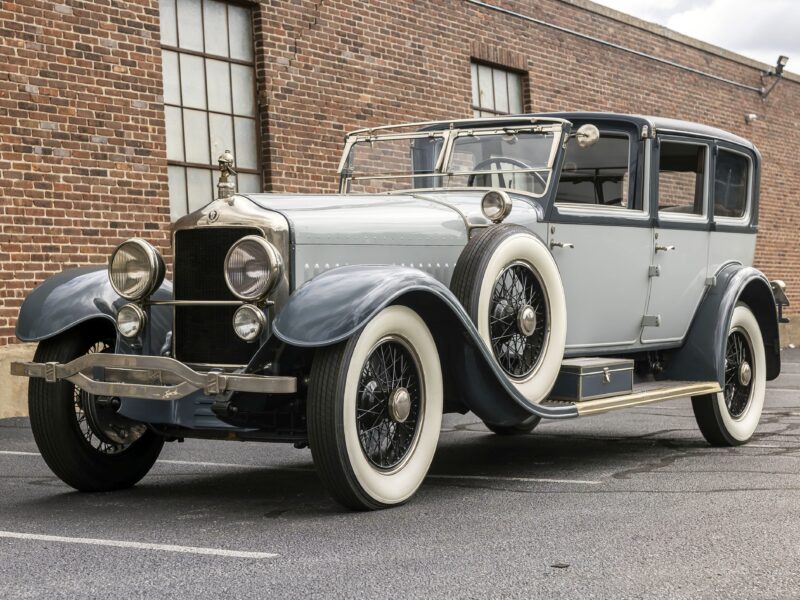
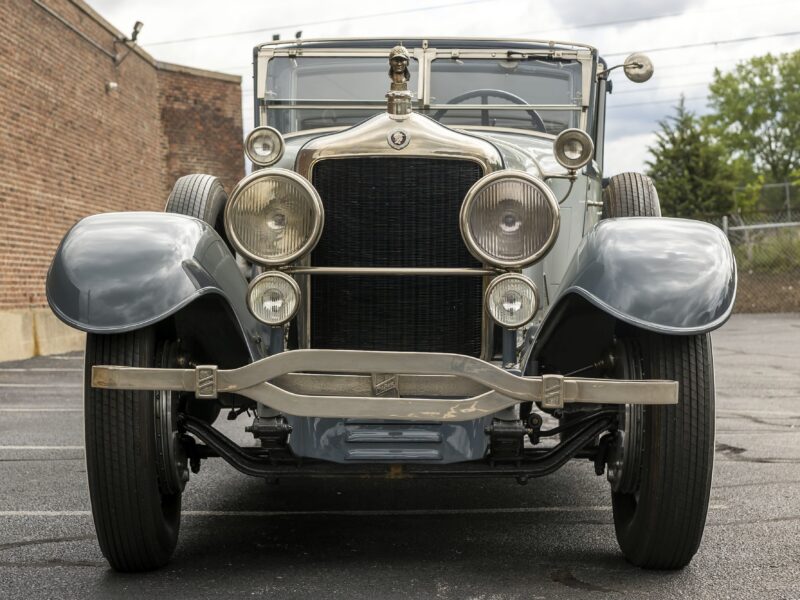
Rare American delivery Minerva believed to have covered only 20,000 miles from new.
Carefully maintained older restoration.
1926 MINERVA AF TOWN CAR
Custom Coachwork designed by Paul Ostruk, Inc.
Chassis No. 56543 Engine No. 56544 AI
5,952cc, Sleeve-Valve inline 6-Cylinder Engine
Zenith Dual Barrel Carburetor
70bhp at 2,800rpm
4-Speed Manual Transmission
4-Wheel Drum Brakes with Dewandre Servo Assist
Leaf Spring Suspension
Rare American delivery Minerva
Believed to have covered only 20,000 miles from new
Carefully maintained older restoration. Long term ownership
Swiftly back on its feet following the German occupation, Minerva returned to
making large, luxurious motor cars and in the 1920s enjoyed considerable
success in the United States where it found favor with film stars, politicians and
industrialists alike. One key component of that success was Paul Ostruk of New
York who maintained a strong agency for the marque as part of his “The
Consolidated Foreign Motor Car Co.” in the mid to late 1920s.
A Czech émigré who had arrived in America in 1908 he quickly learned both
the craft of coachbuilding and the tastes and whims of the wealthy. While
working at the coachbuilder
A.T. Demarest he met with and subsequently teamed up with Emerson Brooks.
Brooks was a respected designer for another prominent coachbuilder, J.M.
Quinby & Co., he was also the treasurer for the Automobile Club of America,
the New York Institution which had begun its days in the infancy of the
horseless carriage and could count the great and the good among its
membership. Brooks was extremely well-connected, and the partnership was
well founded for he could tap the elite for sales while Paul Ostruk would
organize hand tailored coachwork for their cars.
Early activities by the Brooks-Ostruk company commonly consisted of taking
Pierce-Arrow or Packard frames and building bodies of a more European flavor
for them, even disguising the radiator with their own design. It was a recipe
which was rather popular in the inevitable culture of one-upmanship, and when
their custom bodied cars debuted the New York Auto Salons they sold for
considerable premiums.
With a background of these concepts, Ostruk also found that he could acquire
Minerva chassis for relatively favorable terms compared with some of their
American contemporaries, and when clothed with the coachwork he organized
they too proved rather popular with his clientele. The unashamedly bold stance
of the Minerva, with its Art Deco beacon of a Goddess on its radiator must
have cut quite a dash in East Coast high society! Ultimately this would lead to
an agency for Minerva, until the depression set in and challenged both
companies. By 1923, the coexistence with Brooks had run its course, and
Ostruk would form Paul Ostruk & Co. New York.
Minerva, the Roman goddess of wisdom, medicine, commerce,
handicrafts, and poetry
Predating the famed eight-cylinder AL, the majority of Ostruk Minervas were
built on the largest horsepower six-cylinder cars, such as the AF presented here,
with its 5,343cc power plant. Its coachbuilding plate proudly proclaims,
‘Custom Coach Work Especially Designed for Paul Ostruk Co. Inc., New
York, USA’, but what this disguises is the fact that by this time most of his
coachwork was being handcrafted at some of the finest coachbuilders in the
New York area. Firstly, Locke & Co., and later with Raymond Dietrich and
Tom Hibbard’s LeBaron plant. Not surprisingly they incorporated the latest in
design styles and were of very high quality.
Jacques Vander Stappen purchased the AF from Seymour Rappaport of
Teaneck, New Jersey roughly 30 years ago in May 1988, as detailed in the
extensive file of correspondence with the car. On its sale, Mr. Rappaport wrote
to its buyer stating, “The car has 17,000 original miles, was driven only by a
chauffeur (sic) for the first year and thereafter only by me.” He did not record
whom the chauffer’s master was, but it was likely one of Ostruk’s typical high-
brow clients, who perhaps laid it up after that modest mileage and moved on to
another upper crust automobile.
Mr. Rappaport’s tenure would seem to have begun in the 1970’s, as an old title
document lists him as its keeper already by 1973 and photos depict him
retrieving it from a garage where it may well have slumbered for more than 40
years. Notes on file detail minor water damage from the leaking garage roof to
one rear quarter panel as the only more major aspect that required his attention
when he restored it. In the rebuild the car’s two tone grey livery that the car had
been found in was replicated returning it to its former glory of the Roaring
Twenties. Post restoration and through these two last owners that mileage has
risen to a still modest 20,000 according to its speedometer reading.
In Mr. Vander Stappen’s ownership the car has continued to be cherished and
displayed in his private museum, albeit in recent times it was not regularly used
and should be properly recommissioned before road use.
Clearly owing much to European coachwork of its day, and with marked
similarities to the D’leteren AL in this same collection, Paul Ostruk’s tailored
American rendition of this style is an undeniably regal motorcar. Particularly
appealing details of the car are its polished aluminum dashboard, hammered
door handles and trim pieces. Its rear compartment features occasional seating
stowed behind marquetry panels, as well as a plethora of wooden cappings and
trim all surrounded with tasteful mottled grey fabric upholstery.
In new ownership it would surely be welcomed to Concours lawns in Europe or
America.
